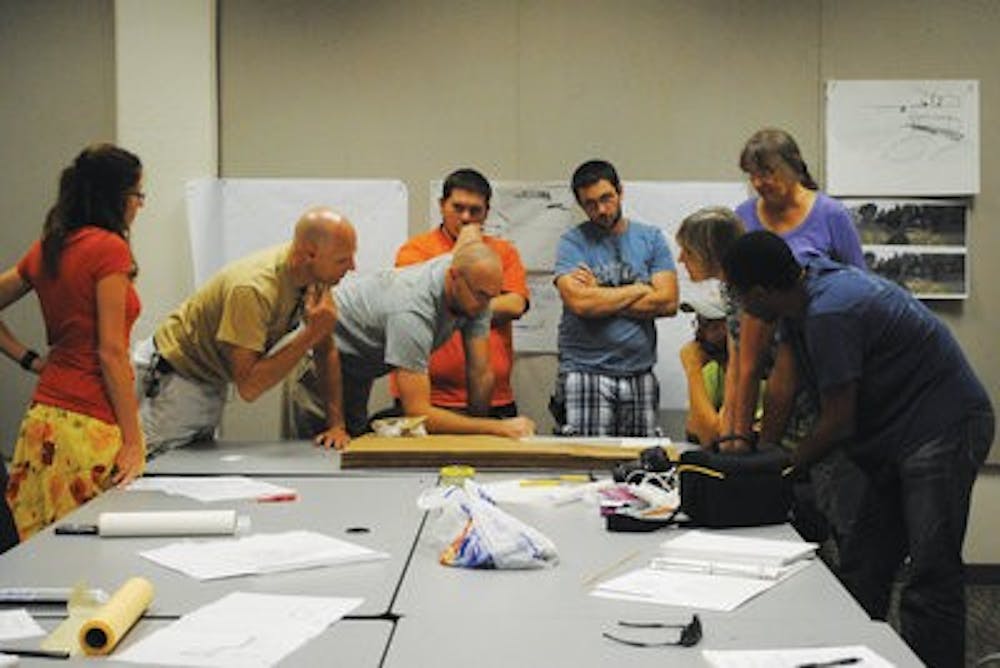The arboretum on campus is more than just a beautiful place to relax between classes--it also serves as a learning lab of sorts for students of landscape architecture.
The graduate landscape architecture course "Sustainable Practices for Planning, Development and Design" is a hands-on class that includes three projects during the semester.
These projects will involve developing land areas in Auburn.
"We have done a lot of work in the arboretum along with our building science program," said Charlene LeBleu, associate professor in the College of Architecture, Design and Construction. "Last year, we had a grant to work at the Boykin Community Center in northwest Auburn, designing cistern and rain garden systems to mitigate storm water runoff."
LeBleu will be instructing this semester's course.
The 13-acre arboretum, located just off College Street, houses more than 200 species of plants, shrubs and vines.
Further development of the arboretum will be the first project students undertake.
They will be installing a bog that will help facilitate the introduction of a carnivorous "pitcher plant" into the already dense vegetation of the arboretum.
The plants need such a water formation to thrive and populate.
The main objective of the project, however, is to provide these renovations and improvements with sustainability in mind.
"Part of our bog project is to look at water systems and waterways and efficiently incorporate them into our projects," said Browning Headden, graduate student in landscape architecture. "We're using the bog water in way that we're recirculating it in some parts while reducing runoff into other areas."
This will create sustainability by recycling water into other areas of the land and not use any city water.
Another local project the class will be performing is stream restoration.
"There is a stream out at the ag. market that has been doing some damage to the surrounding land," said Rodney Benton, graduate student in landscape architecture.
Stream flow can have long-lasting effects.
"The stream is straight, and it's gouging the sides," said Justin Pasley, graduate student in landscape architecture. "Streams aren't naturally straight, so we are going to go in and restore the stream to its natural state by adding lines and natural bends."
Altering the flow of the river benefits the surrounding land.
"Adding the lines and bends basically stops the stream from deteriorating the land around it, making it a little more stable," said Domini Cunningham, graduate student in landscape architecture.
The final project for the class is still in development, but will involve students working with the Lee County Historical Society.
This project will allow students to be more proactive in the development and design of the project. Even though it is early in the semester and there is a lot of planning left to do, the students said they are looking forward to being a part of these exciting projects.
Do you like this story? The Plainsman doesn't accept money from tuition or student fees, and we don't charge a subscription fee. But you can donate to support The Plainsman.





